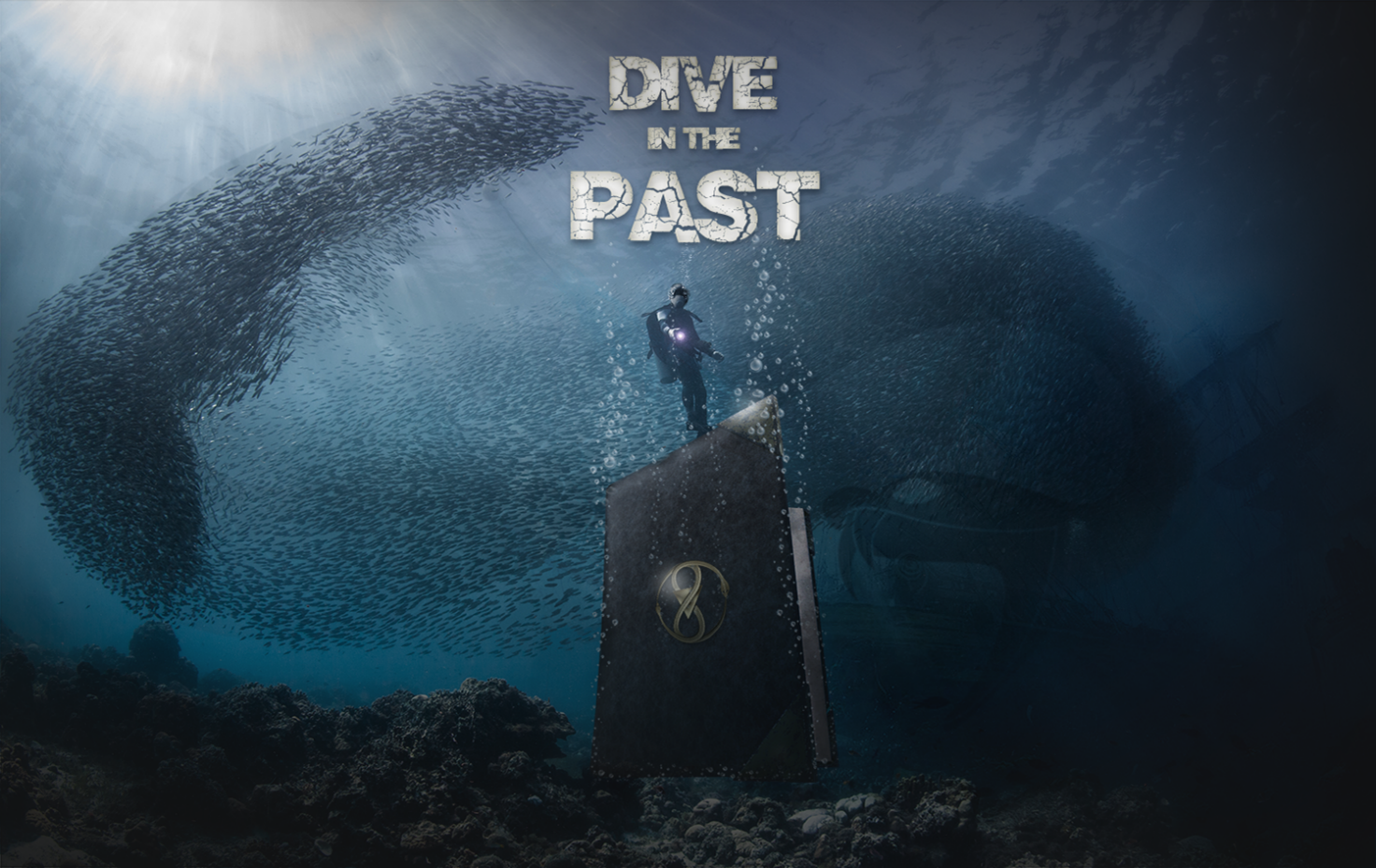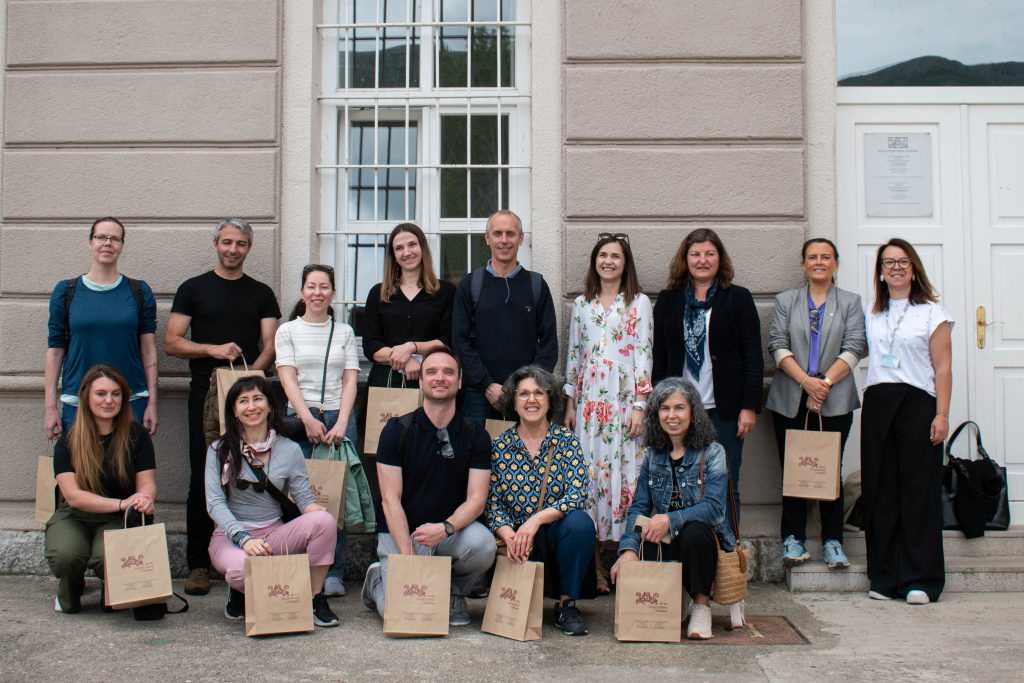Published on 22 Nov 2022
Combine 3D reconstruction, serious gaming technologies and intriguing digital storytelling and the result is a new way to access and enjoy underwater archaeological sites, even if you are not a scuba diver. Fabio Bruno, professor of Virtual and Augmented Reality at the University of Calabria in Italy, cofounder and President of 3dresearch, a spin-off company specialized in digital technologies for cultural heritage, explains this innovative approach and its advantages to improve access and learning about ancient cultures.
The Mediterranean Sea hides countless sunken ships, submerged Roman villas and ancient treasures: an underwater cultural heritage which is documented, but virtually unreachable for the large public and difficult to access even for expert scuba divers. Professor Fabio Bruno and his team at University of Calabria in Italy have been researching and developing innovative digital technologies aimed at enabling the exploration and enjoyment of these underwater sites. The development of these technology-based cultural tourism tools is helping communities on the Mediterranean shores to attract more visitors in a sustainable way as well as creating innovative edutainment contents for a global audience.
Q. How did you start researching and developing these digital technologies?
The first site was in 2016, a Roman shipwreck at Cala Minnola in the Levanzo island, near Sicily, where we developed a 3D virtual reality experience of the site, to be experienced by visitors with a visor. For scuba divers we developed an augmented reality diving system, which includes an underwater tablet and a hybrid system for acoustic localization and inertial navigation. Our goal was to improve the accessibility of the archaeological remains, both remotely and physically. It is difficult for divers to visit underwater cultural sites, because they have to orient theirself, understand what they are looking at while paying attention to all the safety issue related to scuba diving. Our system guides the divers, helps them to understand the archaeological site and provides contextual information, which makes the exploration safer and much more interesting.
Q. UNESCO guidelines in fact recommend the use of digital technologies for the valorization of underwater cultural heritage. Is this approach becoming more popular?
Yes, after Cala Minnola and the other sites of VISAS project we developed further implementations of 3D reconstructions for virtual diving and enhanced diving experiences in various sites in Italy, Greece and Croatia, through the European funded BlueMed project. Thanks also to BlueMed, Greece for the first time opened access to underwater archaeological sites, previously forbidden by law. The first opening of diving paths through underwater archaeological sites with the support of underwater tablet gained a lot of attention and interest by the media and the public. Now there are four connected sites in Italy, two in Greece and one in Croatia providing these digital experiences of all sites (not only the local ones), plus information on underwater archaeology and environmental sustainability. In parallel, we started to experiment with other EU partners the development of the first in the world underwater augmented reality app and the combination of virtual reality with serious gaming and elements of digital storytelling (imareculture.eu).
Q. How does digital storytelling enrich these experiences?
Serious games with immersive technologies allow the public to live the history of the underwater remains. For example, our Dive in the Past serious game (developed by 3D Research in the MeDryDive project) allows users to experience a virtual dive into the Mediterranean Sea, to explore accurate and life-sized 3D reconstructions of four main underwater archaeological sites covering 2500 years of history. To my knowledge, it is the first game of this kind documenting real underwater archaeological sites with an edutainment approach. There is a single narrative linking the sites: the player’s alter ego, a young scientist, finds an ancient diary and travels back in time to save its author, a damned soul, who is reincarnated in each of the historical periods of the sites covered by the game. The adventure starts with the Oreste shipwreck in Montenegro, sunk by a mine in 1942, followed by the Gnalic Shipwreck in Croatia, a Venetian ship sunk in 1583; by the Underwater Park of Baiae near Naples, Italy, the largest submerged site in the Mediterranean with its 177 hectares of Roman villas, fisheries, harbour buildings; and finally the Peristera shipwreck in Greece, a merchant vessel, dated around the last quarter of the 5th c. B.C.,that is considered to be one of the largest of that period since it is estimated that it was able to carry three to four thousand amphorae. The game includes quests, puzzles and challenges to engage divers and non-diver tourists and is available free of charge on the main mobile app stores (Google and Apple).
Q. Do you have evidence on the success and impacts of the game?
“Dive in the Past” was launched in March 2021 and it has been downloaded more than 80,000 times, mainly by Europeans but also by players from the rest of the world, a remarkable result. Most of the players were very satisfied, particularly with the narrative background and the historical and archaeological details integrated in the story. There is still research ongoing with the involvement of the managers and visitors of the pilot sites to evaluate the concrete impact of the game in terms of tourist attraction and stimulating interest in the underwater cultural heritage. However, this is only a start, the potential field of implementation is much wider. We have designed the game with a modular approach, so that new sites can be added with a relatively modest investment and updates can be made to keep up with technical innovation. Besides tourism, these digital instruments have a great potential for education. My university is working with schools, using virtual reality to raise students’ awareness of the cultural heritage as well as of the marine ecosystem and environmental protection issues. We also run laboratories where students use microscopes to view microplastics and understand their pervasiveness and their danger for the marine ecosystem. We hope to stimulate adolescents’ interest for history, archaeology, marine biology and why not, informatics and STEM disciplines in general.
Q. What is the sustainability of these initiatives after the initial investment?
Serious games are expensive, but not in the range of commercial videogames. The development of VR environments and serious games is a team effort requiring collaboration between software developers, creators and archaeologists. Fortunately, in the last 10-15 years the mind frame of public actors and experts has radically changed, from mistrust of multimedia applications to interest and understanding of their potential to enhance the accessibility of cultural sites. We are also training underwater archaeologists to autonomously use these digital instruments. We are working to develop public-private collaborative models and sustainable business plans, where public partners provide access to the archaeological sites and private partners develop the applications and services. Currently the products are provided for free, but in the future the goal is to ask for some payment to ensure sustainability and support continuous development and update.
By Gabriella Cattaneo




